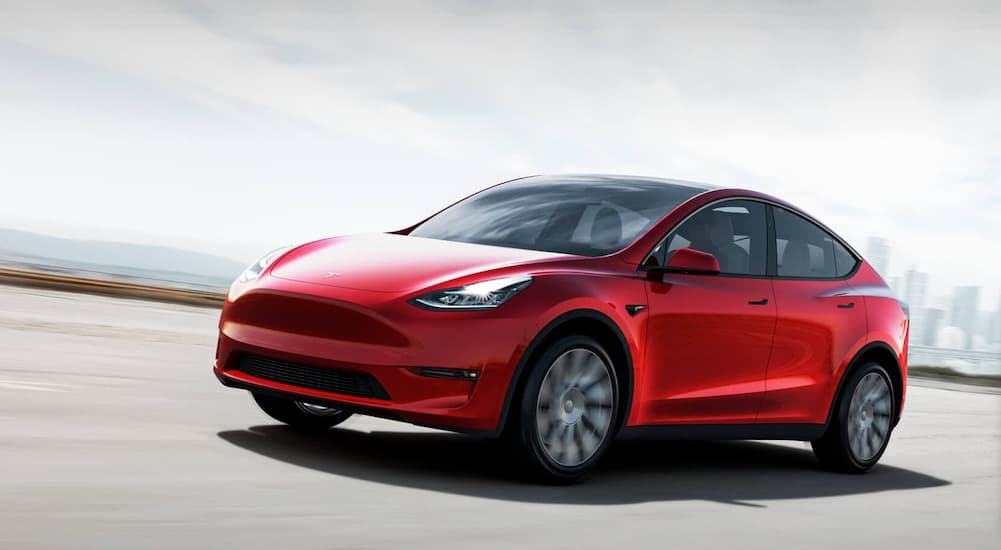The financial market limped through much of 2022 with fears of a recession and rising interest rates both having a noticeable effect. The trend was especially pronounced in the automotive sector, with electric vehicle manufacturers logging a particularly bad year due to supply chain issues, competition from established brands, rising lithium prices, and Twitter-obsessed CEOs. However, there is some hope on the horizon in the form of a revamped tax credit program that could improve access to EVs.
Part of the Inflation Reduction Act signed into law by President Biden in August of 2022; the tax credit program aims to make EVs more affordable for U.S. drivers while also increasing the country’s own homegrown EV supply chain. The program isn’t new by any means––EV and hybrid vehicle tax credits have been on the table since 2005––but the program has been overhauled going into 2023. Unfortunately, it has also become more complicated.
While many Americans can qualify for a $7,500 tax credit on a new all-electric or plug-in hybrid vehicle and up to $4,000 for a used model, the program is chock full of conditions that can make it exceedingly difficult to take advantage of. From buyer’s income to qualifying models, vehicle price, class, and more, there’s no shortage of red tape to navigate, but we’re here to help. Read on as we answer some of the most frequently asked questions about the EV tax credit program, look at which models qualify, and see what steps you need to take to defray the cost of a new EV.
Qualifying Vehicles
While the program might provide a generous $7,500 rebate for many EV buyers, not every vehicle qualifies. Since the law was designed, in part, to support the American manufacturing sector, the list of qualifying vehicles is limited to those that were assembled in the U.S.A. The good news is that many of the leading EV makers are either homegrown brands or have assembly plants in the country, providing buyers with a long list of over two dozen vehicles to choose from.
This “Made in the U.S.A.” requirement might seem relatively straightforward, but it gets a little more complicated once you start to dive into the details. For example, the Volkswagen ID.4 makes the list, but only if it was made at the company’s plant in Chattanooga, Tennessee. German-made ID.4s won’t qualify, so it’s important to do your research before signing on the dotted line. Luckily the National Highway Transportation Safety Administration has rolled out a tool to help drivers to determine whether their vehicle qualifies. Simply punch in the vehicle’s VIN, and the app will give you all the information you need about where it was manufactured and other pertinent details.
Adding to the confusion, many of the “Made in the U.S.A.” requirements don’t actually kick in until March. The 2022 law added new sourcing requirements specific to EV’s battery components, but the IRS has yet to hammer out the details, which gives drivers another couple of months to score a lucrative tax credit without having to jump through hoops. If you’re looking to take advantage of the program before it locks down, the time is now, but be warned: the EV tax credit is based on when a driver takes possession of a vehicle, not when they pay for it. If an EV of questionable origin is on backorder and might not arrive before the March deadline, you could be kissing that sweet $7,500 goodbye.
Price Cap
The tax credit program is about improving access to EVs, not subsidizing your next luxury car. As such, the government has placed a price cap on qualifying vehicles in order to ensure that the program isn’t abused by those looking to live the high life on the taxpayer’s dime. Qualifying vehicles must ring in at less than $55,000––or $80,000 in the case of trucks and SUVs––which is actually more limiting than it sounds. In 2022 the average EV cost was over $65,000, which was 37 percent higher than the average non-EV new vehicle.
The issue is even more pronounced when it comes to the new generation of EV pickups which, owing to their design and limited availability, can easily top the $80,000 threshold. As automakers continue to roll out EVs, the cost is sure to stabilize, but as of right now, the price cap is a very real consideration for those looking to take advantage of the tax credit program. It’s also important to note that the tax credit is based on a vehicle’s MSRP, not the dealer price, so a car that’s priced a little higher than the cap might actually still qualify.
Car vs SUV
There was a time when it was easy to spot the difference between a car and an SUV, but EVs and the crossover SUV trend have made the dividing line a little hazy as of late. The difference is an important one when it comes to the EV tax credit program, as car prices are capped at $25,000 lower than SUVs and pickup trucks.
The tax credit program follows its own unique logic when it comes to separating cars from SUVs, which is just about what we’d expect from the IRS. For example, some vehicles might be listed as cars if they’re sold in a front-wheel drive configuration but be bumped up to the SUV class if they feature all-wheel drive. The Tesla Model Y, on the other hand, is counted as a car despite the fact that most drivers would slot it firmly into the SUV category. According to the IRS website, these categories are based on fuel economy standards for gas-powered vehicles, so don’t just assume a vehicle is a car or SUV based on first impressions.
Income
The new EV tax credit program also comes with some restrictions based on a driver’s household income. The program is limited to those making less than $150,000 ($300,000 for a household or $225,000 for a head of household), which means that Elon Musk is going to be out of luck when it comes to scoring a discounted Tesla. The income limits are based on adjusted gross income (AGI), which can be affected by a taxpayer’s contribution to a retirement account, so it’s important to consult a tax professional if you’re unsure of your eligibility. Those who owe less than $7,500 in taxes might also not be eligible for the full benefit as the tax credit cannot exceed a driver’s total tax liability.
Leasing
The tax credit program might be full of red tape when it comes to buying a new EV, but the same isn’t true of leasing. Those looking to lease a vehicle don’t need to worry about a vehicle’s country of origin, price, or personal income, as the rules are generally a lot more lax. This is because when it comes to leasing an EV, the tax credit goes to the company doing the leasing, not the driver themselves. These tax credits are usually passed on to a driver in the form of discounts, though that’s not true in all cases, so make sure to read the fine print.
Used EVs
As EVs become more ubiquitous on U.S. roads, the used market has exploded. There are plenty of quality pre-owned EVs available today, and for the first time, buyers exploring used vehicles can take advantage of the EV tax credit program. It’s a promising expansion that could go a long way in improving access to EVs, but of course, it comes with plenty of caveats. In order to qualify for the program––which offers up to a $4,000 tax credit on used EVs––buyers must make less than $75,000 ($150,000 for a household) and find a vehicle costing less than $25,000. That’s easier said than done in today’s used EV market, and it gets even more complicated as drivers must buy from a dealership, not a private seller.
Business Vehicles
The EV tax credit program will be a boon to business owners, who can qualify for up to $40,000 in savings. Light vehicles like pickup trucks will earn the same $7,500 tax credit available to the average driver, but if they’re in the market for a larger vehicle like a delivery truck, business owners can nab a tax credit that maxes out at $40,000. Again, sourcing an EV pickup is a big ask at the current moment, but if you’re looking for a box truck or large delivery vehicle, the program could be a huge help.
EV Charger Credit
More good news for business owners: the government wants to provide a $100,000 tax break if you install an EV charger. The incentive has existed for a while now but was limited to just $30,000 until the passage of the Inflation Reduction Act. If business owners meet a number of labor and construction requirements, the Alternative Fuel Refueling Property will qualify them for up to $100,000 in tax savings. The new bill also saw the program extended until 2032, giving businesses plenty of time to take advantage and help improve the country’s EV infrastructure.
Instant Credit
Instant Tax Credit
Tax credits are great in theory, but they also require a lot of work and patience on the part of the taxpayer. Saving $7,500 might sound all well and good, but it could be almost a year before you see those savings take effect, which can be a make-or-break factor for some buyers. The new EV tax credit program addresses this lag by introducing a new option: applying the tax credit at the time of purchase. In essence, the tax credit is transferred to the dealer, who takes care of all the paperwork and bureaucratic red tape while passing on the savings to you at the time of purchase. It might seem like a small tweak, but it could have a big effect when it comes to expanding EV access for some drivers.
The New Program Could Have a Big Impact
The EV tax credit program could have a significant impact on drivers looking to explore the electric side of the auto market, but it hasn’t always been the easiest process to navigate. With the passage of the Inflation Reduction Act, the government has made a concerted effort to address the program’s shortcomings and introduce some very sensible changes, but it can still be a lot for the average driver to navigate. We’re glad to see new policies that improve ease of access, such as the instant tax credit option and expanding the program to include used EVs, but there are still a few oddities that could lead to some confusion. Drivers and automakers alike stand to benefit from the EV tax credit program, and overall it’s a welcomed step in the campaign to incentivize the switch to more efficient, environmentally friendly vehicles while also improving EV infrastructure.






